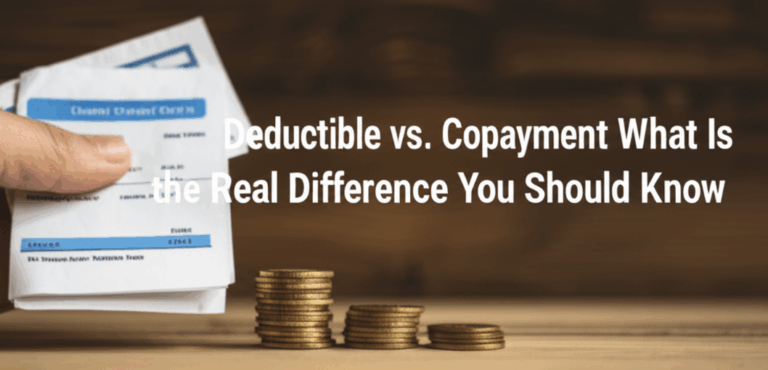What Is Self-Insured Health Insurance and How Does It Work?

Navigating health insurance as an employer means making major choices. You may have seen others talk about “What Is Self-Insured Health Insurance” and wonder if it is right for your business. Understanding the details can help you make a smart decision for both your bottom line and your employees’ health.
Here, we break down how self-insured health plans work, explain their real advantages and risks, and give you the steps and insights you need to decide if it fits your goals. Our experience with self-insured plans can help answer your biggest questions. Let’s look closer at how these plans can make sense for your team.
What makes a self-insured health plan different from traditional coverage
A self-insured health plan works in a simple way. Our business sets up its own health benefits for employees. We don’t pay an insurer every month for a group policy. Instead, we pay the actual health care claims our workers have. This approach gives us more control over the benefits we offer. We get to shape coverage that matches what our team needs. For example, if our employees care about mental health, we can add strong support for mental health services without waiting for an insurer to include them.
A key point about self-insured health insurance is how employer costs change. With a fully insured plan, we used to pay fixed premiums every month, no matter if our workers used their benefits or not. Now, with self-insured plans, we set money aside and pay claims as they come in. This means our costs can go up or down based on healthcare use. We work closely with a third party administrator (TPA) to process claims fast and keep paperwork simple.
Big medical bills can worry any employer. To help protect against huge losses, self-insured companies use stop-loss insurance. This coverage pays for exceptionally pricey claims or covers total claims that go above a certain limit each year. Many mid-sized businesses rely on stop-loss insurance to avoid major unexpected costs. It acts as a financial safety net for our own plan. Part of our strategy involves working with a reliable TPA, so our benefits and risks stay manageable year after year. 
Self-insured health insurance gives employers more control
Self-insured health insurance lets us design employee health benefits from the ground up. We no longer rely on fixed packages set by insurers. Our own priorities guide the plan’s design and coverage limits. For example, if preventive care is most important to our staff, we can offer regular checkups and screenings with low out-of-pocket costs. We also choose our own provider networks, making it easier for workers to keep their trusted doctors.
Control goes beyond picking benefits. We set the process for claims. With help from a third party administrator, we make payments directly and talk with employees about their concerns. This approach gives us insight into trends like rising prescription costs or frequent ER visits so we can respond fast. For example, we once saw our team struggling to get specialist appointments. By choosing a new network, we fixed the problem. This real-life flexibility can boost our team’s confidence in their health coverage.
You pay for your own claims instead of fixed monthly premiums
With a self-insured health plan, our business pays employees’ medical claims as they occur. We no longer send a fixed check to an insurance company every month. Instead, we track claims in real time and keep a reserve fund for unexpected spikes. This gives us direct insight into our actual medical spending and helps us spot trends early. For example, if preventive care visits go up, we may see fewer costly emergencies later on. Over time, tracking these costs lets us manage spending and make the best use of our health benefit dollars. 
Stop-loss insurance helps protect your company from big losses
Employers often worry about one worker’s serious illness causing huge claims. That’s where stop-loss insurance steps in. This policy reimburses us if a claim exceeds a set amount, called the attachment point. For example, our stop-loss insurance may cover any single claim over $50,000 in a year. If total claims for all employees climb too high, stop-loss covers that scenario as well. Many businesses now see stop-loss insurance as a key feature of self-insured plans, not just a fallback. This added layer of protection works alongside our team’s needs, our risk tolerance, and our budget goals.
Related: Are Health Insurance Premiums Tax Deductible in 2025?
What are the real advantages and downsides of going self-insured
Self-insured health plans bring clear benefits to our company. We gain flexibility to adjust coverage as our team’s needs change, so we can add new wellness programs or mental health options that employees value. A self-insured setup can offer cost savings compared to a fully insured plan, especially if our workforce stays healthy. We also get more claims data, helping us understand how employees use their health coverage and spot areas to make benefits better. Internal link: If you’re interested in learning about the specifics of health plan cost management, check out these expert strategies for reducing employee health plan expenses.
However, self-insurance is not without challenges. Our business takes on financial risks because health claims may cost more than expected in a bad year. We must have strong cash reserves or lines of credit ready. Even with stop-loss insurance, unplanned costs require careful planning. We also face extra administrative work. Working with a skilled TPA can help, but we must stay on top of claim processes and compliance rules.
The employee experience with self-insured health insurance is tied to our plan design. If we use a strong, reliable provider network, our team gets better access and service. If we cut corners or fail to update coverage, morale can drop. We listen to feedback and update our offerings as needed, ensuring staff always feel supported. We once surveyed our team and learned that adding telemedicine visits would save time and reduce stress. We updated our self-insured plan, and our team’s satisfaction improved. 
Self-insured plans offer flexibility and potential savings
Flexibility is the number one advantage we see with self-insured health insurance. Our leadership team can adjust covered services, network options, or cost-sharing rules every year. If healthcare prices rise, we have tools to react faster than if we relied on standard fully insured plans. Our plan lets employees use wellness dollars for preventive visits, gym memberships, or telehealth appointments based on feedback. We saw claims drop after focusing on preventive care, saving money but also improving staff health.
Another big benefit is cost transparency. Each month, we get reports that show exactly where our health benefit dollars go. We know which claims are driving costs. For example, noticing a trend in diabetes-related visits led us to invest in a support program. Premium-based insurance hides these details. Self-insured plans let us manage costs and make targeted improvements.
There are financial risks that need careful planning
Our choice to self-insure brings true financial risks. Instead of fixed monthly premiums, we face uncertain health claim costs. One severe illness or multiple simultaneous surgeries in our workforce could blow past our reserve fund. That’s why we buy stop-loss insurance as a key shield. However, it still requires backup plans for unpredictable cash flow needs. We keep extra funds available, stay in touch with our financial advisor, and review our numbers monthly.
Clear risk analysis matters. We looked at our claims records from past years before switching to a self-insured model. We talked with other businesses who tried this. Most advised us to work closely with a third-party administrator and to review stop-loss policy terms every year. We have learned that a change to self-insured health benefits is not a one-time project. It needs constant review and strong internal controls.
Employee experience may vary depending on plan design
Employee experience is shaped by the decisions we make while building our self-insured health plan. We must strike a balance between managing costs and providing valuable benefits. We build our plan to cover key health needs, such as preventive screenings, urgent care, and predictable prescriptions. We keep communication open with our employees, running regular surveys and holding Q&A meetings. Our HR team is prepared to answer questions and help with claim submissions right away.
When employees know they can trust the coverage, satisfaction rises. When plan details surprise them, trust drops quickly. To build trust, we use a reliable provider network and avoid surprise billing issues by working with transparent claims processing teams. Last year, employees appreciated the quick approvals for urgent care. A few raised concerns about specialist wait times, so we adjusted our network. These iterative changes make a real impact over time. Internal link: For step-by-step insights on improving employee healthcare satisfaction, see our detailed guide to optimizing employer-sponsored health benefits.
What steps are needed to set up a self-insured health plan for your business
Switching from a fully insured to a self-insured health plan involves careful planning. First, we review our claims data, check our financial reserves, and look at projected costs for the coming year. We sit down with benefits advisors who ask about our workforce, health risks, and cash flow.
Once we confirm self-insurance will meet our needs, we choose our coverage options. This means deciding which types of care and providers are covered, which wellness benefits we will offer, and how much employees will pay for deductibles and doctor visits. We compare third party administrators for claims support. Our TPA checks claims for accuracy and negotiates rates with providers to make sure we spend wisely.
Compliance matters. We work closely with counsel to obey all federal ERISA requirements and state laws governing employer-sponsored health insurance. Legal and tax consultants review our plan design. We have seen cases where companies faced costly fines for missing deadlines or mishandling personal health data. We avoid these problems by documenting each step and choosing trusted partners. 
After setup, we launch a communications plan that explains new benefits and plan rules to our workforce. We offer examples and share real costs. When our team sees how our choices support both care and cost savings, buy-in increases. Every new plan year, we revisit our design using employee input and claims performance data.
You choose your coverage options and design your plan
At first, the options can seem endless. We start by listing our key objectives: controlling costs, supporting wellness, and ensuring employee satisfaction. Each objective guides our plan design. Coverage for mental health, telemedicine, and chronic conditions are common must-haves. We include details like co-pay amounts, coinsurance percentages, and annual out-of-pocket maximums.
A table of sample plan design options:
| Benefit | Typical Choice | Customizable? |
|---|---|---|
| Preventive Care Visits | 100% Covered | Yes |
| Specialty Drugs | $50 Copay | Yes |
| Virtual Doctor Visits | $10 Copay | Yes |
| Out-of-Network Coverage | Limited | Yes |
We review market trends using sources like SHRM or the Kaiser Family Foundation and consider employee demographics. Our setup gets checked by an advisor before launch. Year after year, we revisit our plan to see if features match changing needs.
Partnering with a third-party administrator can simplify claims
Processing claims requires specialized skills. We hire a third-party administrator (TPA) to process medical bills, answer questions, and handle paperwork. Our TPA manages provider payments and helps comply with HIPAA privacy standards. The right TPA also negotiates lower costs for hospital bills and prescription drugs. Our partnership with an experienced TPA made transition easy, reduced paperwork, and improved employee satisfaction.
Compliance with federal and state laws is essential
Compliance is key to long-term self-insurance success. We follow the Employee Retirement Income Security Act (ERISA) and all updates to the Affordable Care Act (ACA). Each state may have its own rules, such as stop-loss insurance regulations or required notices. Our HR and legal teams stay in regular contact with our TPA for alerts on changes. For example, when prescription transparency rules changed, our team sent training to all managers. Complying with laws keeps our health plan on solid ground.
[Two business professionals discussing new law requirements with a health insurance advisor over documents]
Related: Best Affordable Health Insurance Plans of 2025: Top Picks for Quality & Savings
What are answers to your top questions about self-insured health insurance (FAQ)
What is self-insured health insurance in simple terms?
Self-insured health insurance means our company pays health claims directly for our workforce. Instead of set payments to an insurer, we cover employees’ medical bills and use stop-loss insurance for big risks.
Who usually offers self-insured health plans in the USA?
Large companies often use self-insured plans, but now mid-sized businesses are adopting them more often. Recent employer surveys show more small businesses are exploring self-insured options, especially those with steady cash flow.
How expensive is it to move from a fully insured to a self-insured plan?
The transition can cost more in the first year. We budget extra for reserves, stop-loss insurance, and plan design. Many businesses find costs drop after setup is complete. Careful planning and advice help manage costs.
Can small businesses use self-insured health insurance?
Yes, but it takes careful financial planning. Industry studies show small businesses must watch cash flow and claim trends closely. Stop-loss insurance can help manage risks.
How does stop-loss insurance actually protect employers?
Stop-loss insurance steps in when a single claim or total yearly claims go above a certain threshold. It covers costs above that level. Employers use it to shield the business from catastrophic health expenses.
Are self-insured plans regulated by the government?
Yes. Our plan must follow ERISA, ACA, and other federal rules. States often regulate stop-loss insurance and set rules on plan design.
Does self-insured mean worse coverage for employees?
No. Coverage depends on how our plan is designed. With careful planning and employee feedback, coverage stays strong or even improves. We keep our plan competitive to support employee health and retention.
How do claims actually get processed in a self-insured plan?
Employees visit providers as usual. The provider sends the bill to our TPA, which checks it and arranges payment from our plan fund. We answer questions and help employees apply for any needed reimbursements.
What should you remember when choosing self-insured health insurance
Choosing self-insured health insurance means reviewing all your options carefully. Weigh the flexibility, data control, and cost savings against the responsibility and risks. Ask lots of questions and find a TPA you trust. Talk with employees about their needs so satisfaction stays high. Seek input from a knowledgeable benefits advisor as you plan your next move.
Self-insured health insurance helps us build a custom health plan for our team. With good advice and planning, the advantages balance the risks. Want deeper insight on compliance and wellness strategies? Explore our complete guide to employer health coverage solutions for every stage of business growth. [A benefits consultant talking with a small business owner about health insurance choices in a bright office]






